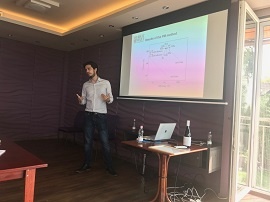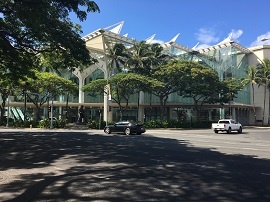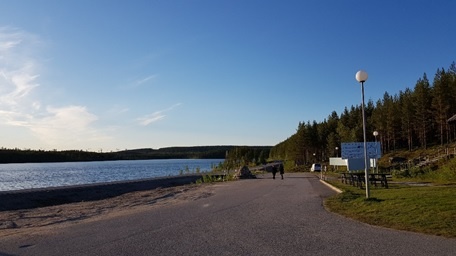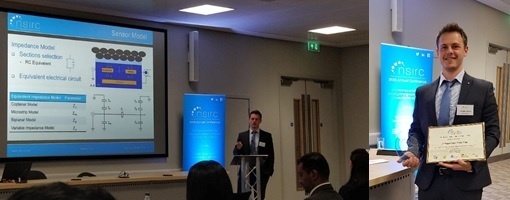Finding the golfing sweet spot
29 April 2023
Written by Paula Malins
Finding the sweet spot is every golfer’s dream. Creating a sweet-spot-o-meter would be a joy for equipment manufacturers. And, scientifically defining it is the focus of sport engineer Paul Lückemann’s current research.
What is the sweet spot?
The sweet spot is the tiny area on the face of a golf club that gives the greatest transfer of energy between the club and the ball, ensuring the best shot in terms of distance and accuracy.
The complex dynamics of the club-ball energy transfer – club design, player technique, even weather conditions – makes calculating the sweet spot’s location hugely demanding.
Paul’s research
Paul is developing an intelligent system for analysing golf swing that will offer new insights into player technique and support innovation in golf club engineering – including pinpointing that elusive sweet spot.
His approach measured two key dynamic indicators (or points of contact between clubhead and ball) during impact by tracking the clubhead rotation.
Using a high-speed multi-camera system, he tracked a driver clubhead at 20,000 frames per second. To provide consistency and accuracy, the swings were performed by a golf robot at 45 metres per second – eight for both dynamic indicator locations to calculate the mean and standard deviation of the clubhead angular velocity (the rate at which it rotates during the swing and impact).
The resulting data were used to model and calculate the sweet spot in this scenario – and an algorithm for use with other types of clubs and swing, established.
Ongoing research
Paul is now working to deliver software that interfaces with an existing motion capture system to analyse golf swing and calculate relevant swing metrics.
He also plans to study the effect of clubhead speed and mass distribution on the sweet spot indicators which will pinpoint the sweet spot for any given golf swing.
Sweet news for golfers and sport engineers everywhere.
Find out more
More about Paul and his research
https://www.lboro.ac.uk/study/postgraduate/student-stories/paul/
Read Paul’s research paper
https://docs.lib.purdue.edu/cgi/viewcontent.cgi?article=1021&context=resec-isea






 Cohort 3 student Gergely Hantos took part in the Cambridge Spark Applied Data Science Bootcamp.
Cohort 3 student Gergely Hantos took part in the Cambridge Spark Applied Data Science Bootcamp.



